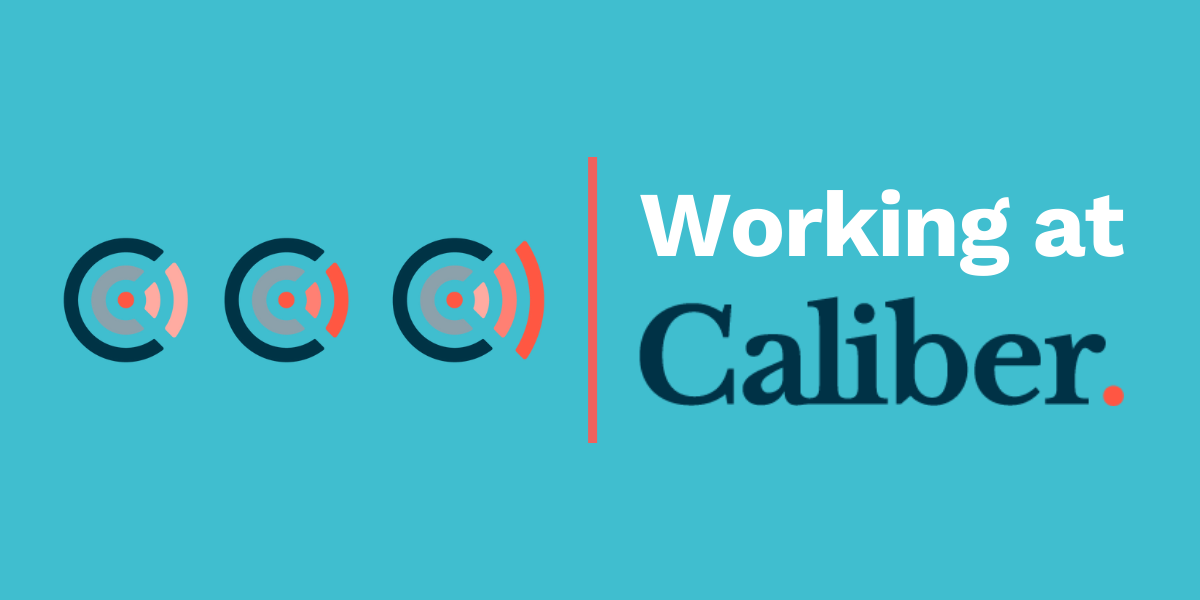WFH – make the most of it, fintech marketers.

Building culture and onboarding new staff takes creative thinking and a little more effort for communicators working from home.
As fintech marketers, we thrive when working in creative, collaborative environments. So much of our work requires a group of talented minds all coming together to find unique ways to leverage an opportunity or solve a problem. At Caliber, working on virtual projects has always been an everyday occurrence – be it with our clients and/or between our teams in New York and Austin.
Yet, the complete virtualization of the workplace over the past year required us to take a more careful look at how we work – to ensure nothing, and no one, slipped through the cracks. Said Harvey Hudes, Caliber’s CEO “It’s most definitely been an evolution over the last 10 months, driven by insights we could only gain by living through this experience and also encouterning some learnings along the way”. Building a strong culture is what builds a great company – and attempting to do so virtually means you have to break through that invisible wall and distance between people.
Bringing new hires into the fold
This is especially true when it comes to on-boarding new team members. We learn as much from the informal “water cooler” conversations that occur in the workplace as we do from formal “on-the-job” training. It’s next to impossible to replicate the more informal learning opportunities in a socially distanced, virtual workplace. What we can do is work extra hard at making sure new hires feel included and know they’re an important part of our promising future.
For new employees, it’s important to remember that it’s not just about “learning the ropes” – it’s about helping them build a solid foundation to create great working relationships and the space to develop their own voice in the workplace. In our virtual working environment, onboarding involves multiple, interactive video sessions, meetings and get-togethers with peers and leadership.
At Caliber, we have a scheduled calendar of opportunities for our new employees to learn and engage with their team members over their first 90 days. These include check-ins with their managers, regular mentor meetings, lunches with the business leadership as well as informal online get-togethers and chat channels to keep the conversations going.
Beyond setting up multiple communication channels – it’s also important to create spaces for new people to ask, what they may fear, are the “dumb questions” which they might normally whisper to a colleague in passing. A good way to do this is enquire about specifics beyond “how are you doing” style questions. For example,; “Has anyone walked you through the process for recording and submitting billable hours?” Actively seeking to help someone get their arms around a new role and the company’s processes is everybody’s responsibility. If you don’t have the answer yourself, you can always help new employees speak to the person who does.
Maintaining a marketing communications culture
Beyond onboarding lies the challenge of fostering a great workplace culture as we look ahead to at least a few more months of principally working from home. For many the novelty of Zoom meetings, working surrounded by children and significant others, and being isolated has worn off. To say it’s challenging for employees to feel connected and motivated at all times is an understatement.
A collaborative environment is at the heart of the fintech (or any) marketing communications effort. Since inception, many of our clients have been remote. What adjusted, as a result of the pandemic, was a shift from weekly client phone meetings to video calls. In general, there is an ease and familiarity with the video call that, previously, wasn’t there. So while there is some “zoom fatigue” out there – in other situations it has really lifted the quality of the engagement, and made us feel even more connected at a time when we all needed it most.
Technology has definitely been our friend throughout this period. Even tools we’ve utilized for years, such as Google chat or Slack, have worked effectively for us as channels for capturing sparks of genius and workshopping ideas on the fly. Also, when brainstorming together online, there are also plenty of online whiteboarding and other collaborative tools to assist in the process. If you are used to collaborating in person over a box of donuts – why not have them delivered!
We backstop our team with a host of technologies that we think improve their effectiveness – and hopefully their motivation. Everything from project management tools to research software such as Signal AI to our own Events Tracker is at their fingertips – to make sure they can work effectively wherever they are.
Don’t forget to encourage workers to take advantage of the benefits of working from home. If brainstorming works best for them sitting in their most comfy chair with their feet up – why not? Not every call has to be video and at the desk. Perhaps a call while walking the dog? Have a conversation with your team about how to best collaborate virtually and what might work best for everybody.
While many of us hope to be back together sometime in 2021 – it’s likely, for some of us at least, a portion of our working lives will continue to be virtual into the future. It’s up to us all to work a little harder to enhance relationships and make interactions less transactional. So, it’s worthwhile to take a few moments to look at your processes and consider how they stack up in this changed world of work. Then, let’s put our creative brains to the task of making it a feature of a more varied and vibrant working culture.
Up Next.
Q&A with Stephen Sumner, Senior Director.
Read More

